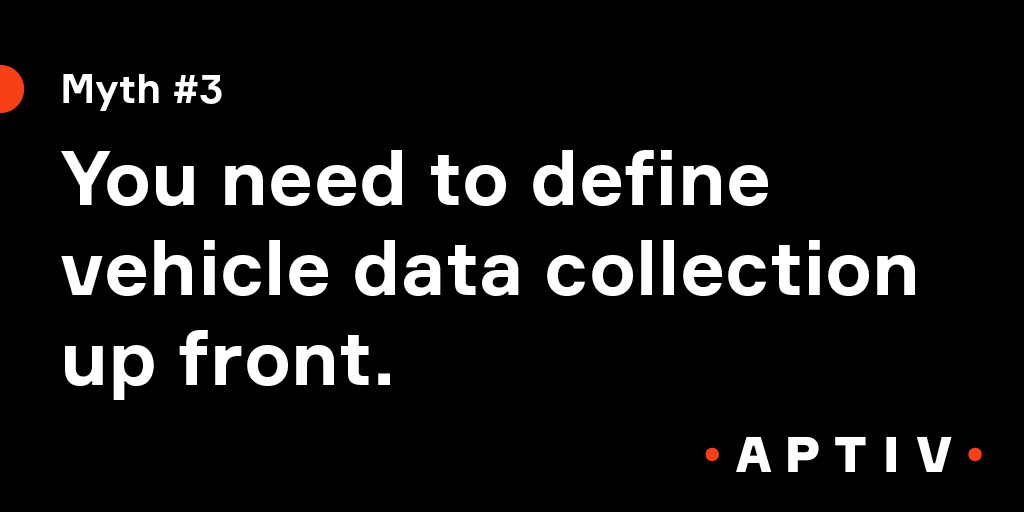How agility is reshaping the way we analyze vehicle data.
We’ve all been there. Faced with too many options, we freeze. What show should we binge watch next on Netflix? What pasta dish on the menu sounds best? There are actually more than fifty shades of gray! Social scientists have a name for this inability
to make a decision when presented with too many choices: “analysis paralysis.” And if you think this phenomenon poses a hassle for trying to select a paint color for the living room, just imagine the impact it has on today’s auto
manufacturers and fleet managers staring down the barrel of all that data being generated from today’s connected vehicles.
Think about it: These vehicles are already generating 25GB of data every day—and those numbers will only skyrocket with each new milestone reached on the road to autonomy. Different signals. Different channels. Different sample rates. No wonder
OEMs and fleet managers are feeling so overwhelmed. Faced with this new reality, how can they, or you, possibly know what data is important now, and which data will be important months, even years, down the road?
You don’t know what you don’t know.The truth is that it’s impossible to predict your future data needs at the beginning of a connected vehicle program. For example, if you’re an OEM doing pre-production validation on development vehicles, you can’t predict what problems
the vehicles will potentially develop. After all, if you knew that, that problem would be fixed in the first place, right?
The same Catch-22 applies if you are a fleet manager. You might not be entirely sure which driver behaviors are leading to safety incidents or delays. You can guess, but in most cases, you really won’t know which metrics matter when it comes
to optimizing operations until the vehicles, and those drivers, have been on the road for a while.
The magic of data campaigns.Now for some good news: You don’t have to define all of your data collection upfront. With Aptiv Connect’s OTA capabilities, you can dynamically configure and reconfigure your data collection as your needs change throughout a vehicle’s
life.
Imagine for a minute that while using Aptiv’s solution you discover your vehicles are experiencing an intermittent misfire issue. In order to figure out why the problem is happening, you will need to collect more and different data.
With other technologies in place, that might mean continuing to use your current data acquisition strategy and waiting weeks or months to have enough data to do a statistically significant analysis. Or it might mean bringing in vehicles from the field
so they can be reconfigured to collect your missing data more quickly. Or it might mean flying engineers around the globe to collect data from the vehicles in the field.
With Aptiv Connect, you can set up a “data campaign” that essentially sends out a remote request to your vehicles to collect additional data related to the particular issue. You can specify which signals to collect, the sample frequency
rate, and even configure the request to turn off after reaching a large enough pool of data for your analytics, keeping data transmission costs to a minimum.
By updating your data strategy in real time, you can dramatically reduce the amount of time it takes to resolve an issue. In some cases, OEMs have reduced the time it takes to fix an issue by up to 50%—and that kind of reduction translates
into some big-time savings. This configurability supports not only today’s problem solving but also provides flexibility to update your data strategy to enable future services in the nascent but evolving connected vehicle marketplace.
Driving a more agile future.We all know it takes time to concept, design, and launch a new vehicle into production. As a result, defining requirements years in advance of releasing new products is second nature. Unfortunately, your vehicle data initiatives may not be on
the same timeline. With Aptiv Connect, long lead time is no longer necessary for vehicle data analytics. Our technology is helping the transportation industry become more like the technology industry, with the ability to respond quickly to
changes in market conditions.
So take a breath. You don’t have to know what you don’t know. Now you can configure your data collection strategy based on what you know is going to be important for your business and then refine, optimize, and revamp that strategy
over time. No more waiting around to develop the “perfect” data acquisition plan. No more analysis paralysis. Just a better, highly configurable way to collect data on the fly, so you can quickly adapt to whatever obstacles appear
on your road.
Check out: Myth #1 | Myth #2 | Myth #4
Visit our Aptiv Connect Platform page

.tmb-portrait.png?Culture=en&sfvrsn=8a28213e_3)